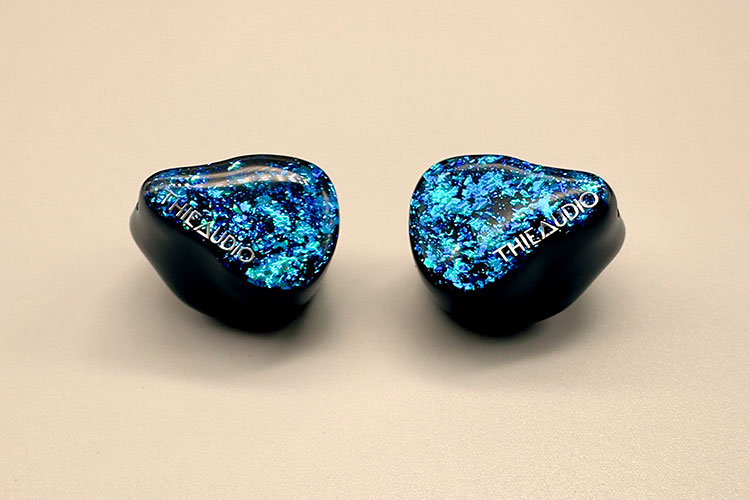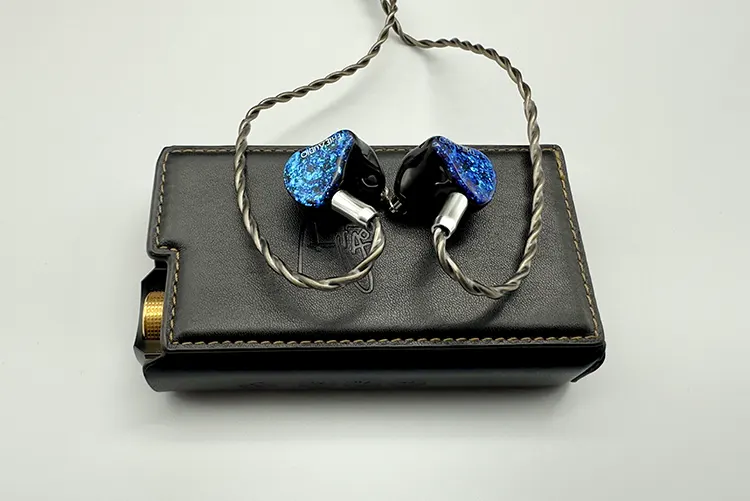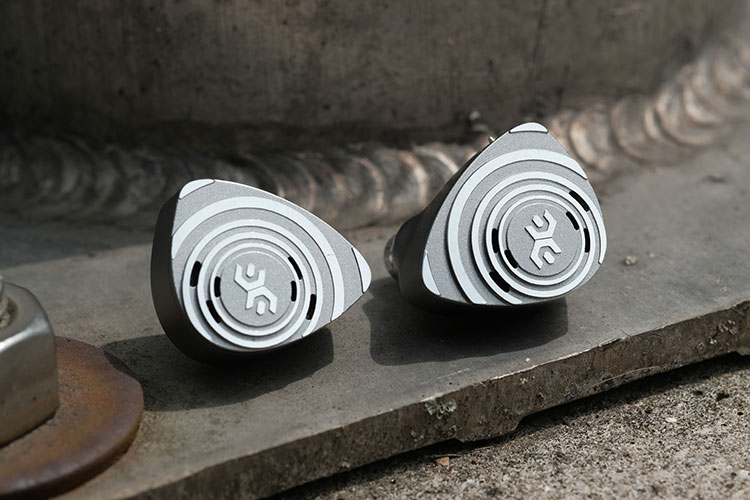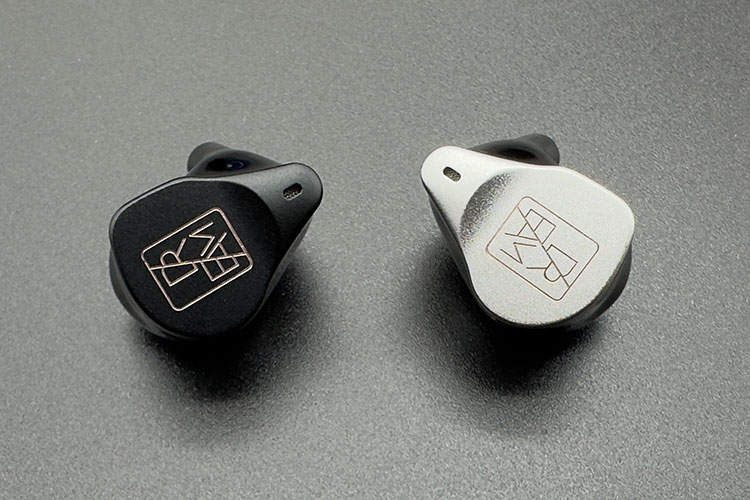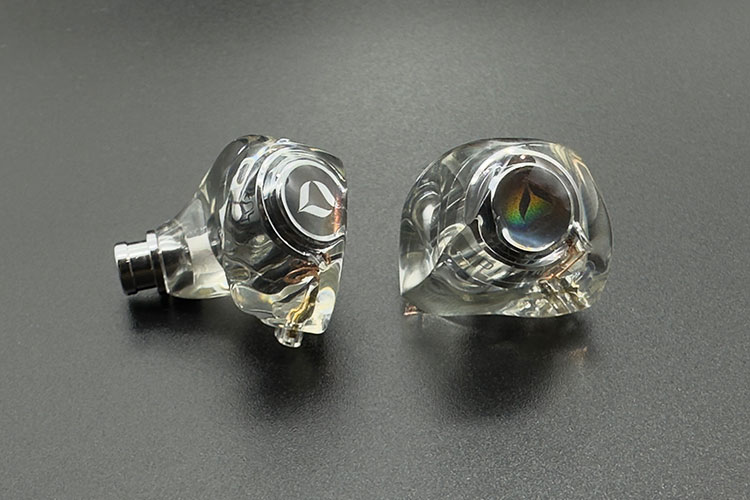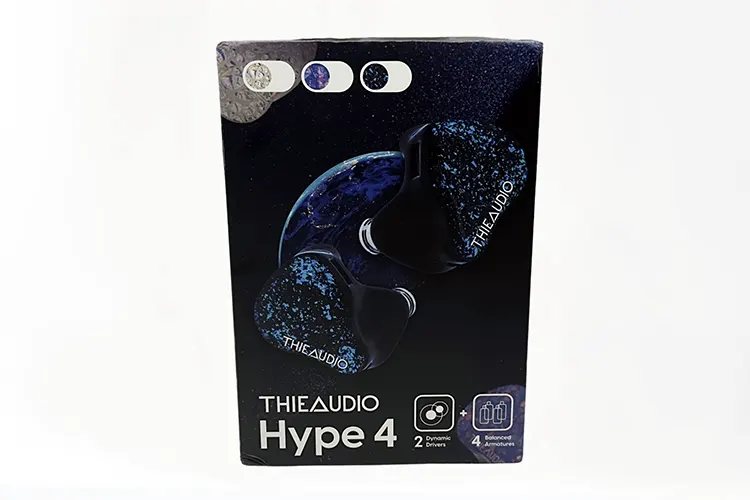Synergy
Efficiency
THIEAUDIO Hype 4 has an impedance of 17Ω @ 1kHz and a sensitivity rating of 105 dB/Vrms.
The IEM is easily driven by sources such as dongles and smartphones. It doesn’t require a lot of power to sound impressive. However, the dynamics noticeably improve when using a quality source or one with a stronger voltage swing.
When connected to high-quality devices such as the Lotoo Paw Gold Touch or Earmen Angel, the sound becomes more spacious and well-dispersed, with a richer tonal weight.
In contrast, connecting to weaker sources like smartphones or basic dongles results in less impressive sound quality, lacking the same level of depth and expansiveness.
Source Pairings
A neutral to slightly warm source is the ideal pairing for the Hype 4. Using a bright source can introduce excessive energy into the upper frequencies, resulting in a sharp and sibilant sound. An overly warm source can make the Hype 4 sound muddy, as it already has some warmth in its tuning.
Hype 4 has good synergy with the Lotoo Paw Gold Touch. The bass response in this pairing is something worth mentioning.
The texture and layering on the bass are quite good. There are a lot of details that I find here that go missing from other sources. The spiciness in the upper midrange to lower treble frequencies is almost negligible on the DAP.
With a neutral-bright profile on Earmen Angel, the Hype 4 pairs quite well. The bass is punchy but not as refined as the Lotoo pairing. The midrange has a good level of transparency and clarity.
The sound is airy, and the treble extension is quite nice too. There is no sharpness in the upper frequency which is quite a pleasant surprise. Unlike the Lotoo Paw Gold Touch, there is no addition of warmth to the sound. The Gain+ mode on Angel makes the sound a bit more expansive, which is more enjoyable.
The last pairing I tried was with the Questyle CMA18P, a DAC/Amp featuring an AKM 4493 DAC chipset and patented Current-Mode Amplifier SiP chips CC630/CA630 for high power output.
The pairing is decent except for some sharpness in the upper frequencies, which is more evident than other sources. It’s good that Hype 4 is more forgiving than many other IEMs for this pairing.
Select Comparisons
Elysian Acoustic Labs Pilgrim
Technical
The Pilgrim is a new hybrid from Elysian with a single 9.2mm dynamic and three BA drivers. The custom 9.2mm dynamic driver within the Pilgrim features Liquid Silicone Rubber (LSR) technology and a magnesium-aluminium alloy diaphragm.
For the mids and the highs, Elysian has equipped the Pilgrim with a custom-tuned Sonion BA driver for a refined presentation and a dual-tweeter E50 with a custom 3-way crossover threading all 4 drivers together.
The Pilgrim has a sensitivity of 101 dB @ 1 kHz mW and an impedance of 9Ω @ 1 kHz. It does not need a lot of power and can be paired easily with a variety of sources.
Design
The Pilgrim features a shell crafted from high-quality aluminum. It is complemented by bores made from 304 stainless steel, renowned for its excellent corrosion resistance. This combination ensures that the shells are lightweight and highly durable.
The Pilgrim’s silver housings feature Knoll-inspired ridges that embellish the faceplate, drawing attention with their unique design. To add to the appearance is a combination of reflective and matte finishes, complemented by six vents surrounding an Elysian logo in the center.
Both IEMs are nicely crafted. While some may prefer the metal shells on the Pilgrim, others may go with the ergonomic resin shells of the Hype 4.
The Hype 4 has a shorter and wider nozzle. Considering the fit factor, I find Hype 4 an easier fitting IEM than the Pilgrim. With Pilgrim, it can be hard to find good-fitting ear tips.
The Pilgrim offers 3.5mm and 4.4mm cables based on what you chose while ordering. The cable with Pilgrim is as good as what I experienced with the stock cable from the Hype 4.
However, it has relatively newer Pentaconn connectors, which makes cable swapping a bit difficult due to the limited availability of cables with this connector.
Performance
Compared to Hype 4, the Pilgrim is more sub-bass-focused, offering greater presence and depth in the sub-bass region.
The Hype 4 features a more pronounced mid-bass, resulting in a fuller overall bass presence. The enhanced mid-bass body of the Hype 4 creates more character in its bass, with better texture and layering, a trait preferable for bassheads.
Due to the elevated mid-bass on Hype 4, the midrange on Pilgrim has a slightly better presence. However, this doesn’t mean the midrange on the Hype 4 is compromised by its heavier bass. The Pilgrim feels cleaner and more transparent in the midrange due to its leaner bass.
The midrange is just a bit forward on the Pilgrim. Vocals on both the IEMs take center stage, sounding close to the ears. I found the vocals on Pilgrim a little denser but by a small margin.
The upper midrange on Hype 4 is just a bit more energetic, but nothing to the point of sibilance. This creates a stronger perception of height through the midrange of the Hype 4.
I like how the treble has been tuned on both of these IEMs, safe and non-harsh, yet quite detailed. For most of the spectrum in the upper-frequency range, they are similar save for a bit more extension on the Hype 4 and a stronger sense of airiness and sparkle.
The Hype 4 offers a wider soundstage and marginally better depth creating a more spacious and expansive presentation. The level of detailing is nearly the same on both though imaging and layering aspects are a bit better on Hype 4.
SIMGOT EM10
Technical
The SIMGOT EM10 is the company’s latest flagship IEM. Inside is a single dynamic driver, eight balanced armature drivers, and one piezoelectric ceramic driver.
The 8mm dynamic driver handles the low frequencies, while the balanced armature and piezoelectric drivers handle the mid, high, and ultra-high frequencies.
The EM10 has an impedance of 41.6Ω @ 1kHz and a sensitivity rating of 120 dB/Vrms. Though it is easy to drive the IEM, the sound is more dynamic and spacious with improved amplification.
Design
Unlike some recent metal SIMGOT IEMs, the EM10 is built with resin. The shells on the EM10 are black with various faceplate color options, with one side sporting a silver faceplate and the other a matte black finish.
The shells are nearly similar in size compared to the Hype 4 though the nozzle on Hype 4 is wider and shorter. The weight of both IEMs is almost the same, which makes both IEMs similar in terms of fit and comfort.
Though not very well-accessorised, the EM10 still offers a better presentation and accessories. The cable on the EM10 has a better build and has a modular option with both 3.5mm and 4.4mm terminations.
Performance
Both the IEMs offer a warm tuning with a good emphasis on bass. EM10 is warmer than the Hype 4. The EM10 provides a richer sub-bass but falls slightly short in mid-bass quantity.
The Hype 4 delivers a more balanced bass with superior quality, offering better texture and layering. Those who favor more sub-bass will likely prefer the EM10, while the Hype 4 appeals to those seeking a more balanced and refined bass experience.
The warmth in the EM10’s tuning can be a matter of personal preference. This added warmth enriches the lower midrange, providing a lush and full-bodied sound.
However, if you prefer a cleaner and more transparent midrange, the Hype 4 should be a better choice though vocals on EM10 carry more weight and sound more accurate.
When comparing the upper midrange of both IEMs, the EM10 exhibits a denser and more well-defined sound. Both IEMs have good energy, but the Hype 4 can occasionally sound thin or sharp in the upper midrange, a trait not found in the EM10.
In the lower to mid treble region, EM10 is more detailed, however, Hype 4 offers a more balanced and natural treble response. The Hype 4 has an airier treble quality with more presence and energy in the upper treble region.
Both of these IEMs exhibit a comparable soundstage with commendable width and depth. However, in terms of imaging, the Hype 4 excels.
While the EM10 is adept at highlighting details, the Hype 4’s cleaner and more transparent sound makes it seem more detailed. Additionally, the EM10’s heavier sub-bass and warmer tuning can sometimes interfere with the overall clarity.
Dita Audio Project M
Technical
Project M features DITA’s in-house customized PM1+ 9.8mm dynamic driver and a single Knowles balanced armature driver housed in highly optimized stainless-steel chambers.
It has a rated impedance of 32Ω @ 1kHz and a sensitivity rating of 107 dB/Vrms. The IEM can be driven well by most sources, however, it can take a good amount of power to scale well whereas the Hype 4 is not as demanding.
Design
The shells of Project M are crafted from transparent 3D-printed resin, showcasing a solid and sturdy structure with a crystal-clear prism-like design that suggests durability and strength.
I find Project M’s design more appealing and the build more robust than the Hype 4. However, from a comfort point of view, the lightweight and smaller shells of Hype 4 have an edge.
The Project M uses 0.78mm 2-pin connectors similar to the Hype 4 but gets a modular cable with 4.4mm and 3.5mm termination options. While both cables are good, I prefer the cable on Project M as it has a very good synergy with the IEM.
Among the IEMs in its price range, I believe Project M impresses the most with its sophisticated presentation and good-quality accessories. The accessories bundled with Project M, such as the Tanos carry case and Final Type E ear tips, are better than what is offered with the Hype 4.
Performance
Project M presents a near-neutral sound profile with a hint of warmth, which is quite different from what we are offered with Hype 4. Hype 4 is warmer in comparison.
There is no doubt that Hype 4 offers a heavier bass. Hype 4 has significantly more sub-bass and mid-bass. Project M’s bass maintains a balanced, neutral, and lean character compared to Hype 4.
However, the bass on Project M has a nice punch to offer. With a better source, the bass on Project M has quite a good presence and impact.
Project M has a forward and transparent midrange. It has more energy on Project M but can sound thinner than the Hype 4’s lush and richer midrange. The upper midrange on Project M has a similar energy level as the Hype 4, but it comes across as a bit sharp and spicy.
I find Hype 4’s treble to be better tuned as it does not show hints of sharpness, which Project M occasionally does. Hype 4 offers a balanced treble definition that is non-fatiguing.
Both of these IEMs exhibit a good sense of airiness, however, the Hype 4 has a better upper treble extension, bringing out details a little better.
Hype 4 has staging width and better depth. The imaging and layering factors are better on the Hype 4, however, Project M is not very far behind. In terms of resolution, Project M has an edge as it maintains a good level of transparency and the details come out clearer and more precise.
My Verdict
The ThieAudio Hype 4 is undoubtedly a competitive IEM offering a sound signature that is technically impressive and enjoyable. It delivers robust bass and a rich midrange, with a nice technical performance that stands out among its peers and sets a high standard for ‘musicality’.
The only minor gripe is the limited accessories included. A 4.4mm balanced cable would have been a valuable addition, although this is a small issue in the grand scheme of things.
As an upgrade from the Hype 2, the younger sibling, it offers a clear improvement, though the similar price range of the two models might be a bit confusing. Anyone considering the Hype 2 should consider the Hype 4.
THIEAUDIO Hype 4 Specifications
- Driver Configurations: 4 Balanced Armatures + 2 Dynamic Drivers
- Frequency Response: 10Hz-22kHz
- Impedance: 17Ω
- Sensitivity: 105dB (±1dB) @1kHz
- Cable: Silver-plated OCC cable, Detachable 0.78mm 2Pin

